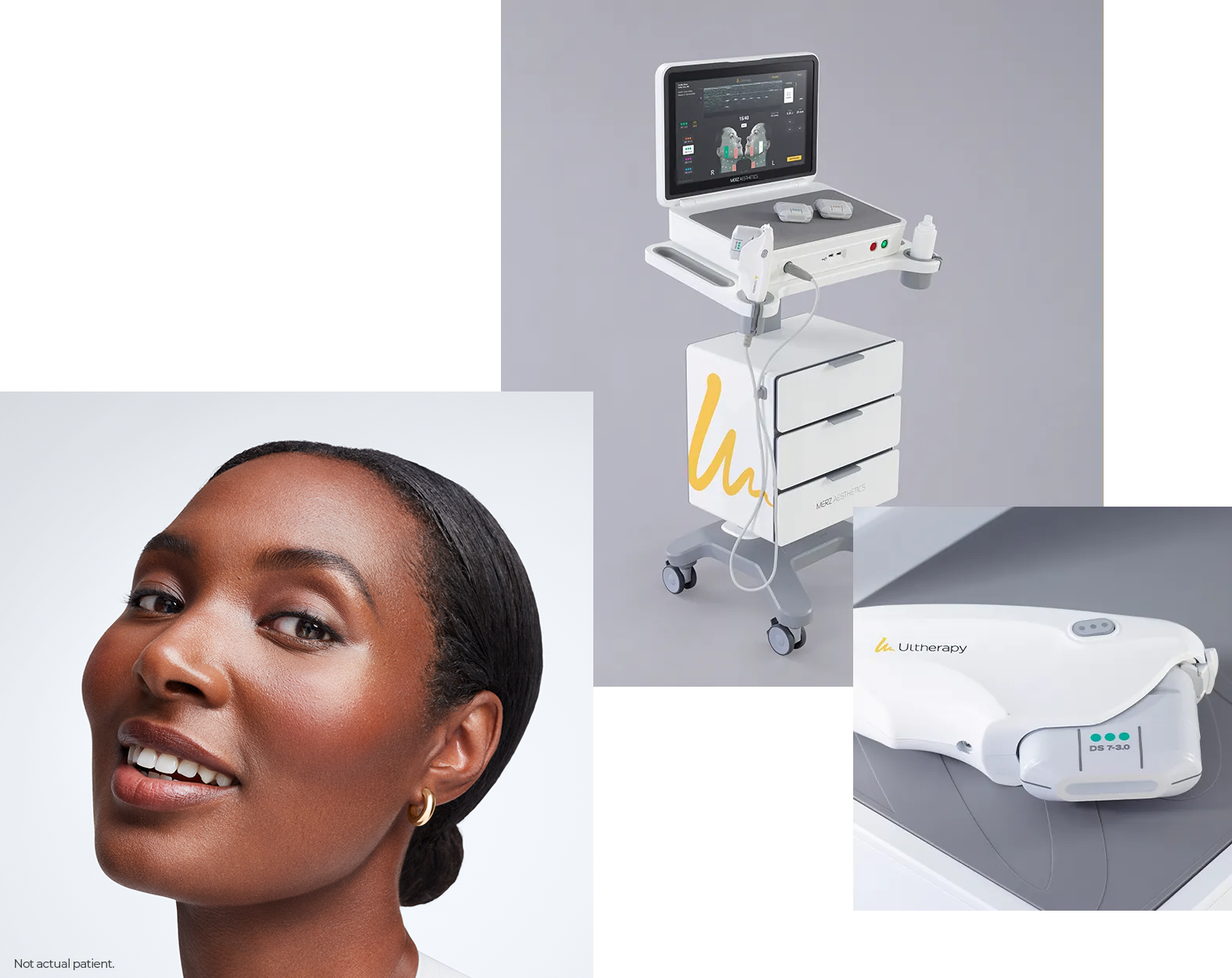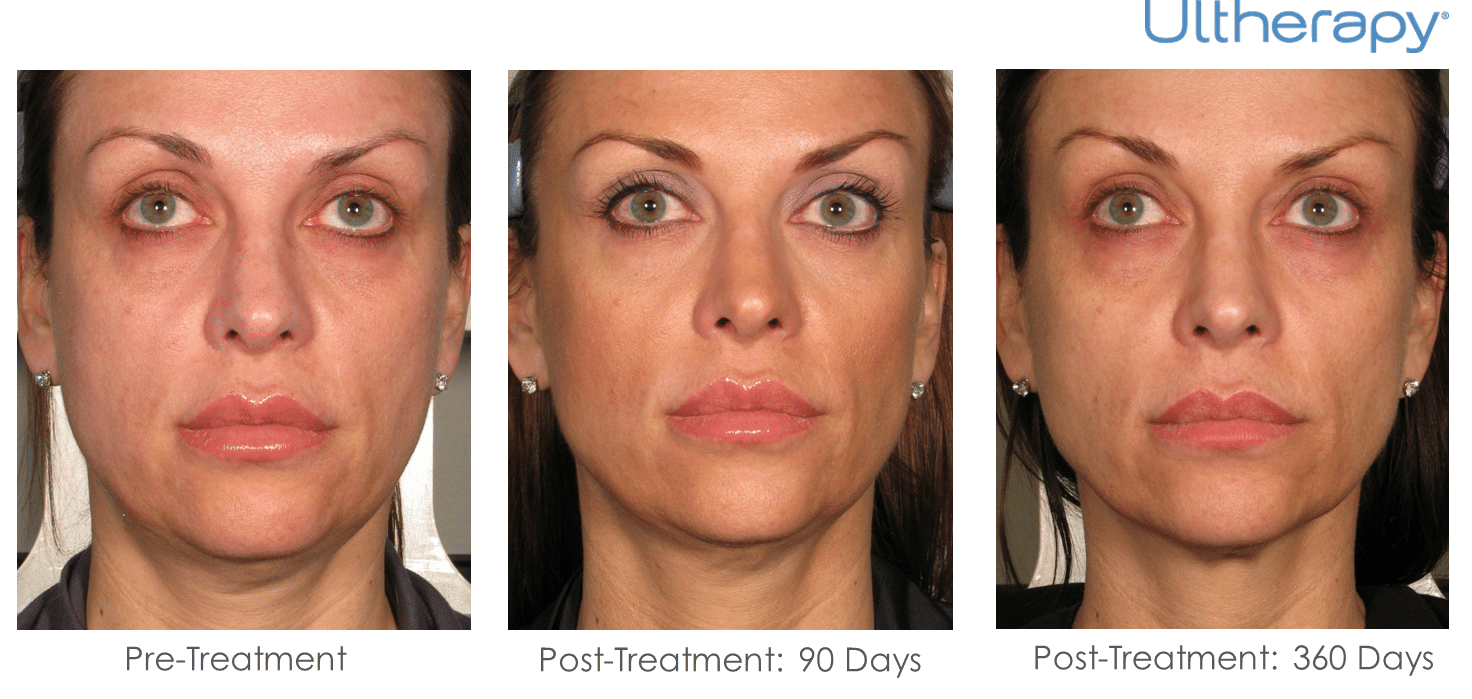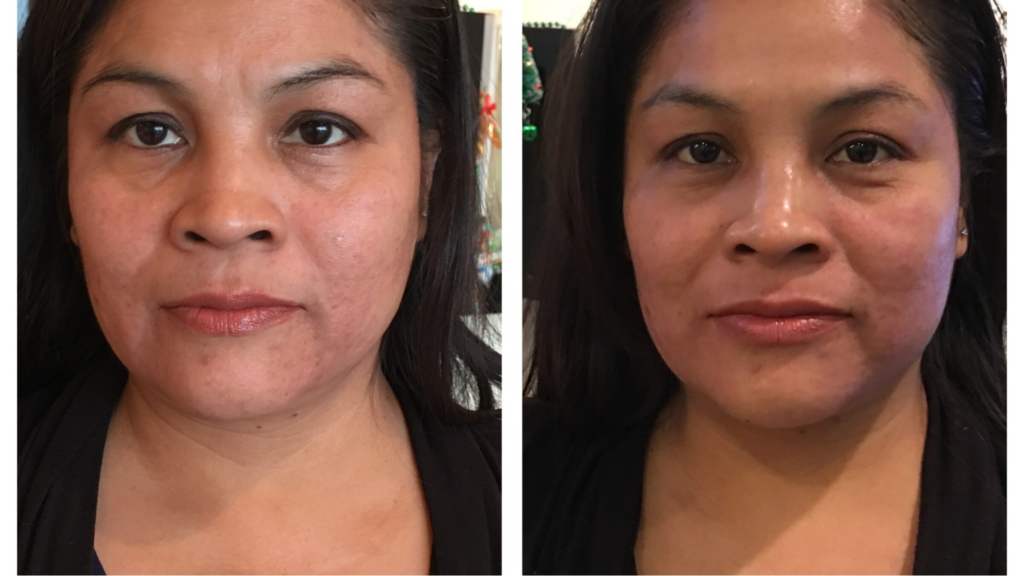Why Ultherapy May Be Medically Necessary: Discovering the Reasons for a Non Surgical Lift
Ultherapy is acquiring focus as a sensible choice for individuals encountering skin laxity because of aging or details medical conditions. This non-surgical therapy promotes collagen production, using a service that avoids the healing time connected with intrusive procedures. As individuals seek to boost not only their look however also their general skin health, recognizing the situations that necessitate Ultherapy's use comes to be crucial. What elements add to its medical need?
Understanding Ultherapy: What It Is and Exactly how It Works
Ultherapy, a non-invasive cosmetic procedure, makes use of ultrasound technology to boost collagen production and promote skin firm. By delivering concentrated ultrasound power deep into the skin, it targets the fundamental layers generally attended to in surgical facelifts. This procedure urges the body's all-natural healing feedback, resulting in progressive training and tightening of the skin in time.

Therapy sessions generally last in between 30 to 90 minutes, relying on the size of the location being dealt with. While results may not be quickly visible, ideal impacts generally show up within two to three months as collagen remains to develop. Ultherapy deals a compelling non-surgical choice for people seeking skin renewal without the need for invasive treatments.
The Aging Process: Impacts on Skin Flexibility and Collagen
Aging undoubtedly brings adjustments that diminish skin elasticity and collagen manufacturing, leading to visible indicators of sagging and wrinkles. As people age, the skin's capacity to maintain wetness declines, resulting in a drier and less resistant surface area. Collagen, a necessary protein accountable for skin framework, likewise lessens, creating the skin to lose its firmness and younger appearance. Variables such as sunlight exposure, toxic wastes, and way of life selections further accelerate this decline in skin high quality.
This loss of flexibility and collagen develops a waterfall of changes, including the development of dewlaps, growing nasolabial folds up, and a total sagging look. The skin's support group weakens, making it more vulnerable to the impacts of gravity. Lots of people seek interventions like Ultherapy to fight these aging effects, aiming to recover an extra vibrant, tight appearance without the requirement for invasive surgical procedures.
Clinical Problems That May Take Advantage Of Ultherapy
Ultherapy is increasingly identified for its possible advantages in dealing with numerous medical problems. Individuals experiencing skin laxity, those in post-surgical recovery, and individuals with chronic skin problems may locate this non-invasive treatment advantageous. By promoting collagen production, Ultherapy can improve skin firmness and enhance total appearance for these teams.
Skin Laxity Problems
Skin laxity can be a substantial worry for people experiencing different clinical conditions that impact the integrity and flexibility of their skin. Problems such as Ehlers-Danlos syndrome, which interferes with collagen production, can cause early skin aging and sagging. In addition, individuals with autoimmune conditions might experience skin changes that add to laxity. Hormone fluctuations, especially throughout menopause, also contribute in lessening skin firmness. Ultherapy, making use of ultrasound technology, targets the deeper layers of skin, boosting collagen production and tightening the impacted locations. This non-invasive treatment may use a viable service for those looking for to address skin laxity resulting from these medical problems, boosting both look and self-worth without the demand for medical intervention.
Post-Surgical Healing Aid
Post-surgical recovery can commonly existing challenges, particularly for individuals experiencing skin laxity because of surgical interventions. Ultherapy offers as a prospective help in this situation, utilizing ultrasound innovation to promote collagen production and enhance skin rigidity without intrusive procedures. Individuals who have actually undergone surgical treatments such as facelifts, liposuction surgery, or various other body contouring treatments might locate that Ultherapy boosts their recuperation by resolving irregular appearance and laxity that can take place post-operation. This non-surgical strategy can bring about boosted visual results, possibly minimizing the requirement for extra surgical interventions. Furthermore, it might aid relieve pain connected with the healing process, offering patients an extra comprehensive healing experience. Subsequently, Ultherapy can be a useful choice in post-surgical care.
Persistent Skin Problems
For individuals experiencing persistent skin disease such as acne scars, rosacea, or laxity as a result of aging, non-invasive therapies might use substantial alleviation and improvement. Ultherapy has actually emerged as an appealing option, making use of ultrasound innovation to promote collagen production deep within the skin. This procedure can improve skin appearance and elasticity, addressing problems like uneven complexion and sagging. Specifically, those with rosacea may experience minimized redness and swelling, while patients with acne marks can take advantage of improved skin level of smoothness and overall look. Notably, Ultherapy supplies a non-surgical choice that reduces healing time and threats associated with intrusive treatments, making it an appealing selection you can try here for people seeking reliable administration of persistent skin disease.
Psychological Effect of Drooping Skin and Aesthetic Problems
The psychological toll of aging frequently shows up in the type of drooping skin, which can significantly impact a person's self-worth and overall psychological health. Lots of people connect vibrant appearances with power and good looks, leading to feelings of insufficiency when confronted with noticeable signs of aging. This regarded decrease in beauty can result in social stress and anxiety, withdrawal from social communications, and a raised obsession with one's look.
Individuals might feel compelled to seek aesthetic therapies to combat these problems, as the desire to preserve a vibrant appearance can become intertwined with individuality. The emotional effects of drooping skin may likewise cause clinical depression or a lessened lifestyle. Subsequently, non-surgical alternatives like Ultherapy arise as prospective options, intending not just to rejuvenate the skin but additionally to recover self-confidence and a favorable self-image, eventually attending to the deeper emotional implications of aging.
Comparing Ultherapy to Typical Surgical Options
When contrasting Ultherapy to conventional surgical alternatives, considerable differences arise in both cost-effectiveness and healing time. Ultherapy offers a non-invasive strategy that usually leads to lower expenditures and very little downtime for patients. On the other hand, surgical lifts usually require even more monetary investment and an extended recuperation period.
Cost-Effectiveness of Ultherapy

Although conventional medical lifts typically come with considerable upfront expenses and expanded healing Full Article times, Ultherapy presents an engaging alternative that can provide equivalent results at a portion of the price. The average expense of a medical facelift can range from $7,000 to $15,000, while Ultherapy therapies typically fall in between $2,000 and $4,500, relying on the area treated and copyright know-how. Additionally, the lack of substantial pre-operative analyses and post-operative care associated with Ultherapy additionally adds to its cost-effectiveness. This approach not only reduces monetary pressure however additionally enables individuals to purchase various other facets of their health and well-being. By doing this, Ultherapy arises as a monetarily viable option for those seeking facial rejuvenation without the concerns of conventional surgical treatment.
Healing Time Contrast
Healing time is a considerable aspect in the decision-making procedure for those taking into consideration cosmetic treatments. Ultherapy stands out as a non-surgical option that normally requires minimal downtime. A lot of individuals can go back to here their everyday activities almost instantly, experiencing only mild soreness or swelling that generally solves within a couple of hours. In contrast, conventional surgical alternatives, such as renovations, commonly require a prolonged healing period. People might encounter a number of weeks of swelling, wounding, and restricted activity, with some returning to normal routines occupying to three months. This plain distinction in recovery time makes Ultherapy an attractive option for people seeking effective outcomes without the substantial aftercare connected with surgical procedure, permitting a smoother modification back to day-to-day life.
The Long-Term Perks of Non-Invasive Treatments for Skin Health And Wellness
As people increasingly seek choices to operations, the lasting advantages of non-invasive therapies for skin health and wellness become much more evident. Therapies such as Ultherapy, chemical peels, and laser treatment offer significant advantages without the need for comprehensive recuperation times connected with surgical procedure. RJ Clinic Ultherapy. In time, these non-invasive choices can promote collagen manufacturing, resulting in stronger skin and an extra younger look
In addition, regular non-invasive therapies can enhance skin structure, tone, and elasticity, boosting total skin health and wellness. People typically experience fewer issues and adverse effects, making these procedures extra attractive.
Furthermore, the collective results of consistent treatments can maintain and lengthen aesthetic enhancements, permitting individuals to preserve their wanted appearance with minimal downtime. By prioritizing non-invasive approaches, individuals can accomplish lasting results while prioritizing their health and wellness. Inevitably, the lasting advantages of such approaches highlight their growing popularity in contemporary skin care.
Often Asked Questions

How much time Does an Ultherapy Session Normally Take?
An Ultherapy session commonly lasts in between 30 to 90 minutes, depending upon the treatment location. Variables such as the individual's certain requirements and the extent of the treatment can influence the general period.

Exist Any Side Results Associated With Ultherapy?
Ultherapy can lead to negative effects such as short-term inflammation, swelling, or tenderness in the treated location - Skin tightening treatment KL. While the majority of people experience marginal pain, it is vital to get in touch with a specialist for personalized guidance and potential reactions
How Soon Can I See Outcomes After Therapy?
Arise from Ultherapy normally begin to show up within 2 to 3 months post-treatment. The full impacts might remain to establish over 6 months as collagen manufacturing boosts, causing obvious lifting and firm of the skin.
Is Ultherapy Suitable for All Skin Kinds?
Ultherapy is typically ideal for various skin types, including lighter and darker tones. However, individual skin disease and problems may affect its efficiency, making assessments with a qualified professional vital for customized recommendations.
Exactly How Usually Should Ultherapy Treatments Be Repeated?
Ultherapy therapies are typically recommended every 6 to year, relying on individual skin problem and preferred results. Regular assessments by a certified specialist can assist figure out the very best regularity for maintenance and effectiveness.